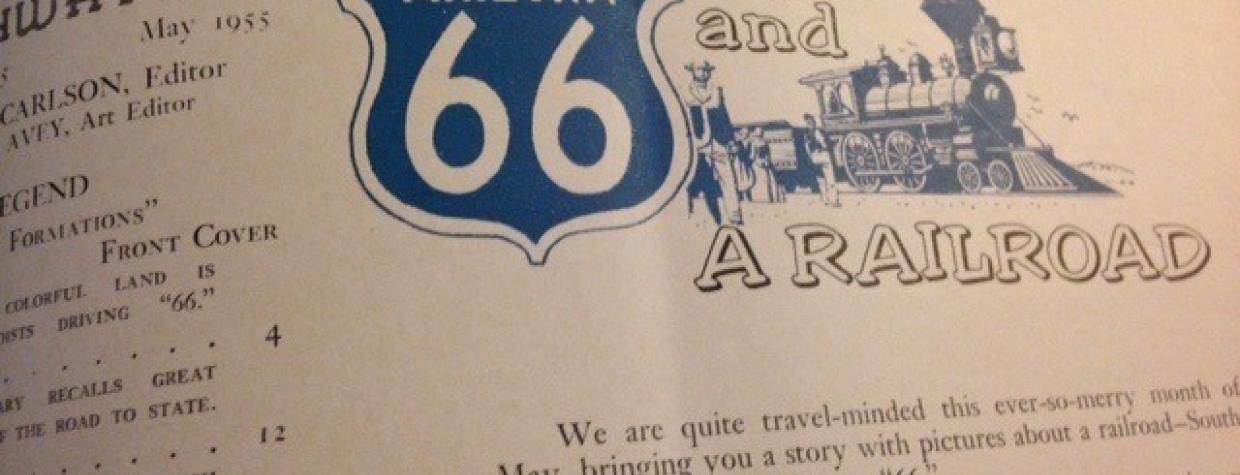Our May issue (on newsstands now) focuses on Historic Route 66 — the history, the quirks, the scenery and more. But we've been covering the Mother Road for a lot longer than that. Sixty years ago this month, Editor Raymond Carlson opened another transportation-themed issue with this editor's letter, titled A Road and a Railroad.
We are quite travel-minded this ever-so-merry month of May, bringing you a story with pictures about a railroad — Southern Pacific — and a highway — "66."
Seventy-five years ago the old S.P. came a'snorting and a'chugging into the largest town in the territory — Tucson — making so much noise it scared every horse for miles about. But it was a big day for the territory because steel rails had finally broken down the barriers that distance and inaccessibility had built around a primitive frontier wilderness. The railroad brought folks in and all the things they needed to live like civilized folks should live, and it took out to markets of the world the things they dug out of the ground — like copper — and grew on the ground — like cattle and farm products.
It was a big day for Arizona, a little over 75 years ago, when the first S.P. locomotive arrived at Tucson. Every day since then, it has been a big day for Arizona when S.P. locomotives — now mainly sleek diesels — come a'humming in with more and more new residents and go a'humming out with goods and merchandise to help keep our economy percolating freely. The anniversary was too important to miss; so that's why we give you a glimpse herein of the S.P. and what the railroad means to the state.
There were no automobiles in those days when the first S.P. locomotive came to Arizona. But there are now. So it is about time that we devote a few pages every now and then to our leading highways. We start off with "66," the highway over which so many thousands of people travel during the summer months to visit the scenic wonderland of Northern Arizona. "66" is our most heavily traveled highway carrying transcontinental traffic through the state. It starts off in Chicago, crosses Illinois, Missouri, Oklahoma, Texas, New Mexico, Arizona, California, ending up at Santa Monica. It has been called at times the Will Rogers Highway and the Grand Canyon Route.
The total length of "66" in Arizona is 376 miles. Of that amount 174.8 miles are constructed to interstate standards (minimum of 40 feet in width). Every year the Arizona Highway Commission approves new projects to bring our part of "66" up to those standards. "66" has a hard time to keep up with the ever-increasing load of traffic it has to carry, but it's doing the job.
Last year an average of 2,999 vehicles used "66" every day, of which 73 per cent were out-of-state vehicles. If you are impressed by figures, that means that last year 1,094,635 vehicles rambled over "66," going either east or west. Estimating three persons to a vehicle, you have a total of 3,283,905 people seeing Arizona via the magic travel ribbon that is "66." Some traveling, as the saying goes; and some highway.
Photo from the May 1955 issue of Arizona Highways.

